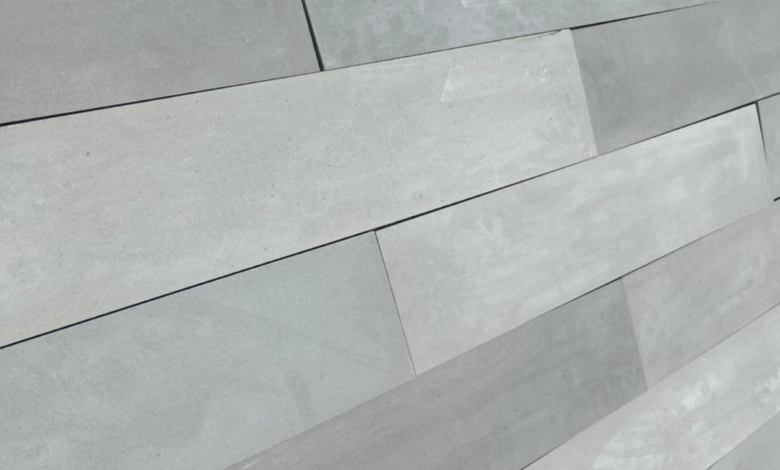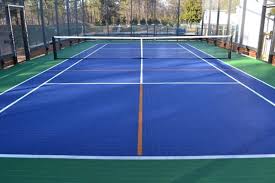How to Choose the Right Grey Sandstone Paving for Your Garden

Transforming your garden into a picturesque haven involves many choices, one of which is selecting the right paving material. Among the various options available, grey sandstone paving stands out for its timeless elegance and durability. But how do you choose the perfect grey sandstone for your garden? This guide will walk you through everything you need to know to make an informed decision.
Understanding Grey Sandstone Paving
The adaptability and visual appeal of grey sandstone paving make it a popular option for yard landscaping. It is a naturally occurring stone that ranges in tone from light to dark grey. It is a desirable alternative for both conventional and modern garden designs due to its texture and organic patterns. Grey sandstone is also a long-lasting option for outdoor areas since it is resilient to many types of weather.
Benefits of Grey Sandstone Paving
Choosing grey sandstone for your paving has many benefits. First of all, despite severe weather conditions like torrential rain and freezing temperatures, it is incredibly resilient. Second, it’s a safe choice for patios and garden walkways because of its non-slip surface. Thirdly, your garden will look better overall because of the subtle touch that grey sandstone’s natural beauty brings to it. It also requires little maintenance—just occasional cleaning to keep it looking flawless.
Factors to Consider When Choosing Grey Sandstone Paving
Selecting the ideal gray sandstone paving for your yard requires careful thought. The following are some important things to remember:
- Color Variation: Grey sandstone is available in a wide range of shades, from pale grey to nearly charcoal. Select a shade that goes well with the other items in your garden while keeping in mind the overall color scheme. You may want a consistent hue for a more unified effect, but different shades can look more lively.
- Texture and Finish: Grey sandstone pavers can have a smooth or rough texture. Smooth surfaces give modern gardens a sleek, contemporary appearance, making them perfect. Rough textures, on the other hand, are ideal for historic garden settings and lend a rustic character. Select the texture that most closely matches the look you’re going for.
- Size and Shape: Grey sandstone pavers come in a range of forms and sizes. Smaller stones can be stacked in elaborate patterns, while larger slabs give the impression of space and uniformity. Your garden’s design and personal taste will determine the size and shape you choose.
- Thickness: The stability and longevity of grey sandstone pavement are largely dependent on its thickness. Thicker slabs are more resilient and less likely to shift or crack. To provide long-lasting performance, a minimum thickness of 25 mm is advised for patios and garden walkways.
- Installation Method: Take into account the way your gray sandstone paving will be installed. For paths, dry-lay constructions are typical as they make replacing individual stones simple. For driveways and patios, wet-lay techniques with mortar offer a more long-lasting alternative.
- Maintenance Requirements: Even though grey sandstone requires little upkeep, some varieties might need to be sealed to guard against moss development and stains. Select a stone that fits your maintenance preferences after taking into account the amount of care you are willing to commit to.
Types of Grey Sandstone Paving
Grey sandstone paving comes in a variety of forms, each with its special qualities. Making the best decision for your garden might be aided by your understanding of these varieties.
- Kandla Grey Sandstone: The delicate light grey tones and finely-grained texture of Kandla grey sandstone are well-known. Its smooth appearance and consistent hue make it a popular option for modern landscape designs. Additionally, kandla gray is extremely resilient to weathering.
- Raj Green Sandstone: Raj Green sandstone is termed “green,” yet it often has a gray tone to it. With differences in color and texture, it provides a more organic, rustic appearance. For traditional garden settings and those who want a more earthy appearance, this kind of sandstone is perfect.
- Autumn Brown Sandstone: Shades of grey, brown, and occasionally purple are seen in autumn brown sandstone. It’s ideal for creating a cozy outdoor atmosphere and gives off a warm, inviting vibe. This sandstone’s multitude of colors makes it a flexible option for a variety of landscape designs.
- Silver Grey Sandstone: Light, silvery-gray tones are what define silver grey sandstone. It looks elegant and is frequently used in contemporary garden designs. It’s a classy option for patios and pathways because of its smooth texture and subtle color variation.
Maintenance Tips for Grey Sandstone Paving
Grey sandstone paving is easy to maintain, but consistent attention will guarantee that it looks great for many years to come. The following advice will help you maintain the best-looking paving:
- Regular Cleaning: Regularly sweep your paving to get rid of dirt and trash. In locations where moss or algae development is likely to occur, use a hard brush and soapy water to thoroughly clean the surface. Harsh chemicals should not be used as they can harm the stone.
- Seal the Paving: If you want to keep your grey sandstone paving stain- and weather-resistant, think about sealing it. A high-quality sealer will give another degree of protection while bringing out the natural color of the stone. For best results, reapply the sealant every few years.
- Weed Control: Look out for any weeds that may be growing in between the paver slabs. To keep weeds from harming the stone or joints, pull them by hand or with a weed killer. Reducing weed growth can also be achieved by applying a weed membrane underneath the pavers.
- Repair Damage Promptly: To stop additional degradation, take immediate action to repair any damage to your paving. To keep the surface smooth and even, replace any cracked or chipped slabs and fill in any joint spaces.
Conclusion
Your outdoor area may become a beautiful and useful place with the correct grey sandstone paving installation. To choose the ideal paving for your demands and design, take into account elements like color, texture, and upkeep requirements. For many years to come, gray sandstone pavement will provide your landscape with a stunning and long-lasting surface with the correct installation and care.


